Our collection of interesting and unusual homes includes everything from cave homes and tree houses to toilet-shaped homes, soccer-ball-shaped abodes, and portable dwellings.
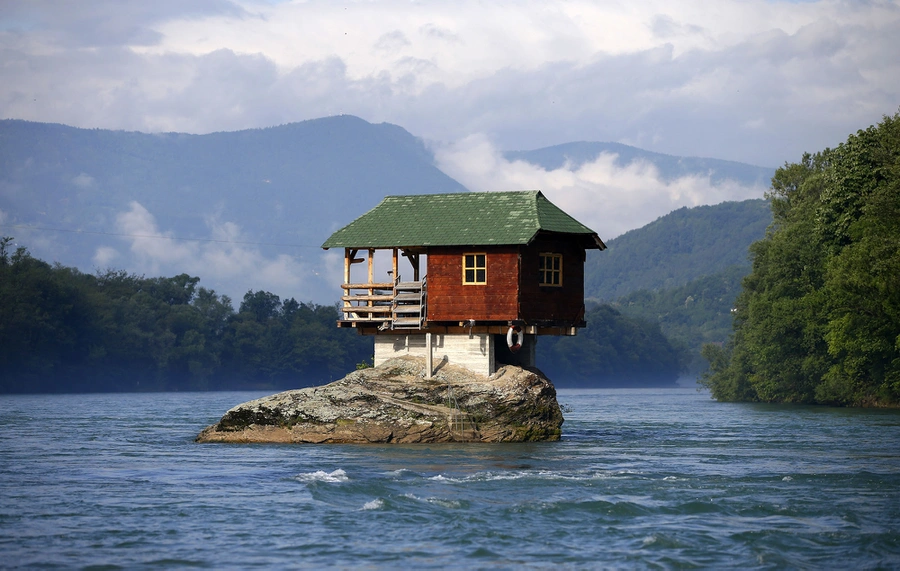
On May 22, 2013, a house perched atop a rock was spotted close to Bajina Basta in western Serbia, around 160 kilometres (99 miles) from Belgrade. According to the house’s co-owner, who was also engaged in its construction, the house was erected in 1968 by a group of young men who believed that the rock on the river was the perfect spot for a small shelter.
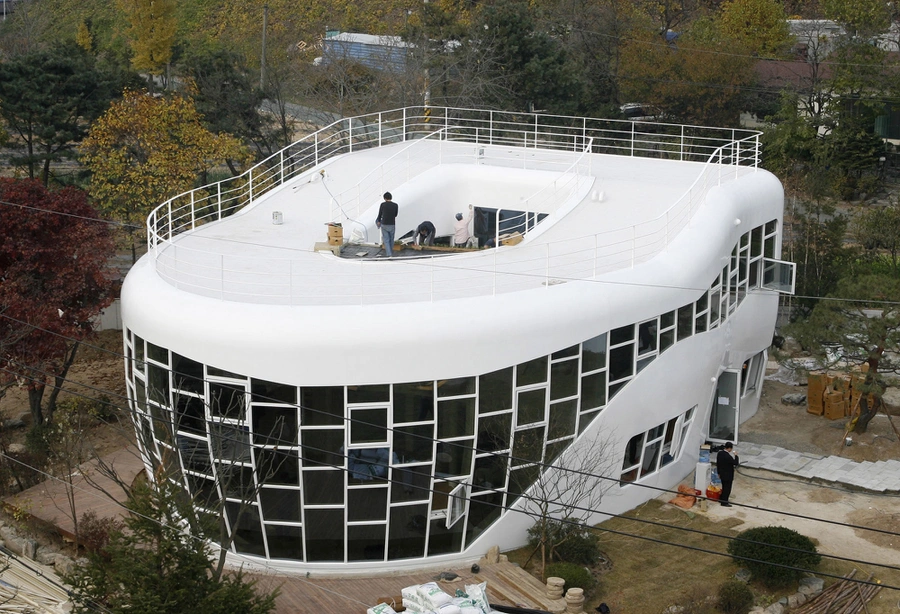
On November 9, 2007, a toilet-shaped house called Haewoojae, which means the house for satiating one’s uneasiness, was spotted in Suwon, a city located 46 kilometres (29 miles) south of Seoul. Lifting the lid of the world’s first residence shaped like a lavatory with plenty of bathroom space was done by South Korean sanitation campaigners to commemorate the founding of a global toilet association.
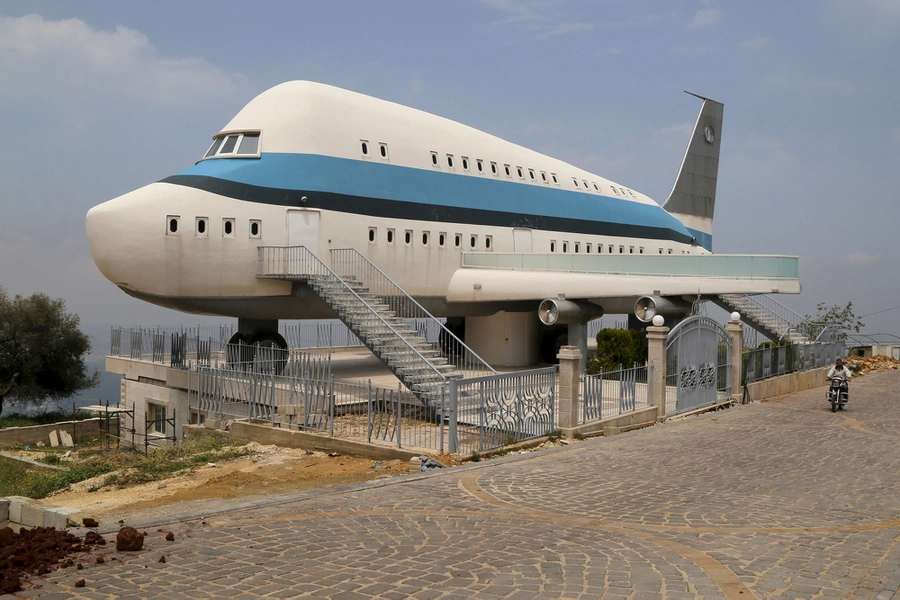
On May 12, 2015, an aeroplane home was spotted in the Lebanon hamlet of Miziara. Residential buildings constructed by Miziara are designed to resemble ruins from ancient Egypt and Greece, such as this one that is shaped like an Airbus A380.
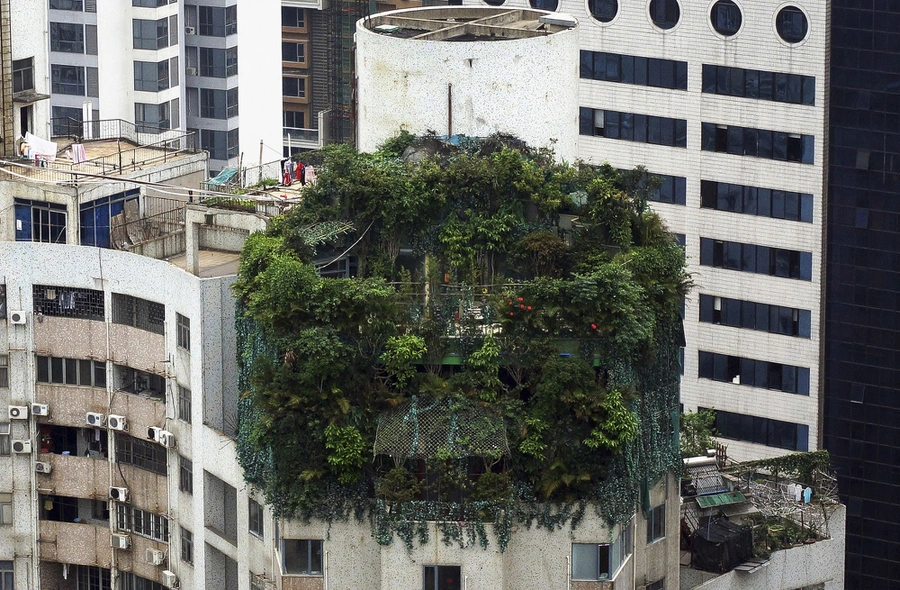
On April 11, 2014, a 19-story residential building in Guangzhou, Guangdong province, China, had what appeared to be an illegitimate structure atop it. The building, which occupies a space of around 40 square metres, was constructed ten years ago. The development was first spotted by local law enforcement in 2012, but they have not been able to track down the owner since, according to local media.
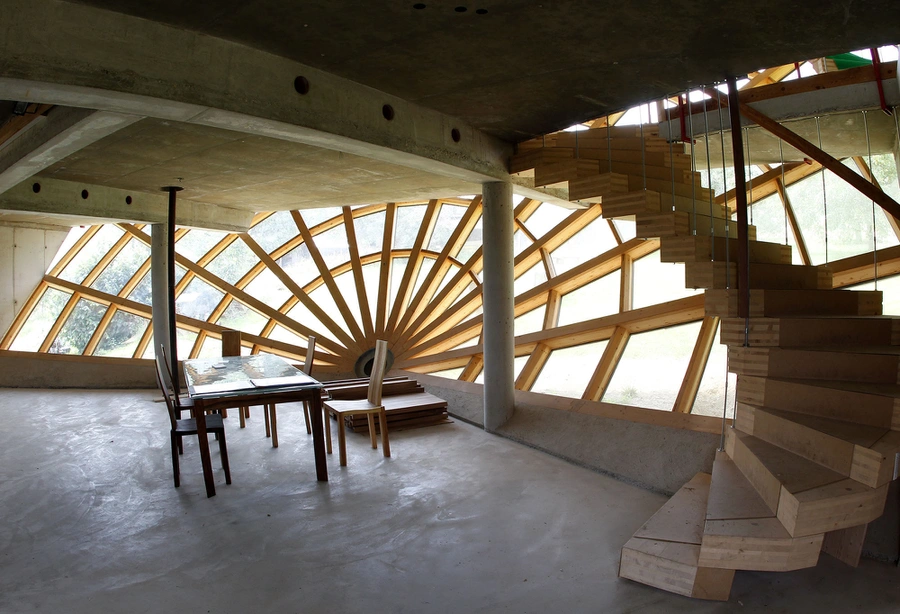
A room within the Heliodome, a bioclimatic solar house, as seen from the inside on August 4, 2011, in Cosswiller, France, a rural area in the Alsace region close to Strasbourg. In order to give shade during the summer and maintain a cool interior temperature, the home is constructed to resemble a massive three-dimensional sundial and is positioned at an angle with respect to the movements of the sun. As the sun is lower in the sky in the fall, winter, and spring, more sunshine enters the wide windows, warming the interior.
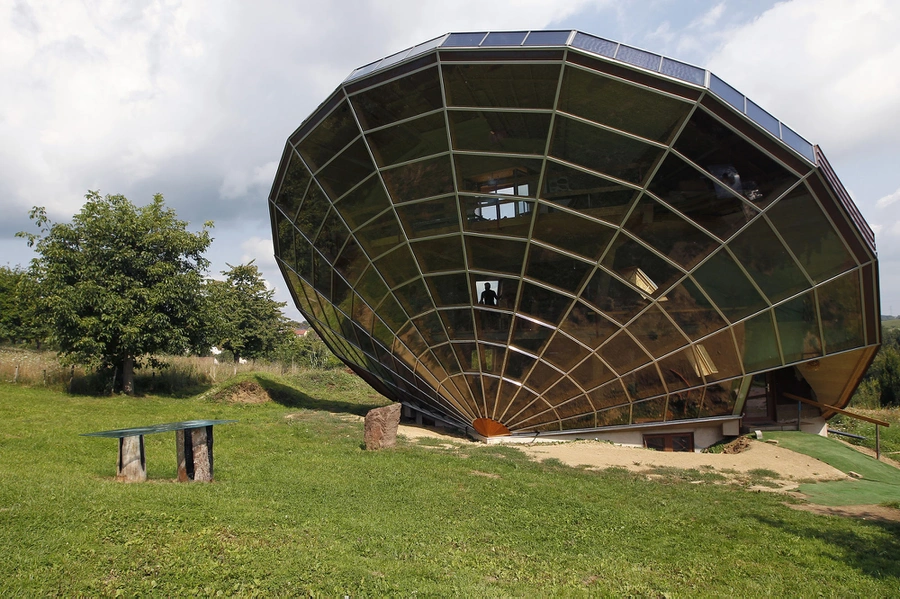
On August 4, 2011, the Heliodome, a bioclimatic solar home, was built in Cosswiller, eastern France. The building is shaped like a massive three-dimensional sundial and is positioned at a fixed angle with respect to the movements of the sun.
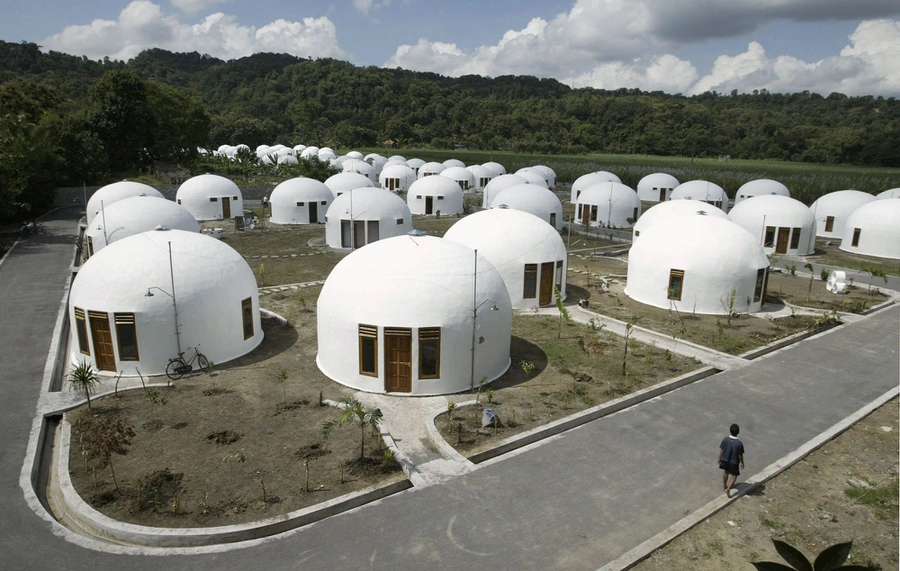
A view of roughly 70 dome homes constructed by the American organisation Domes for the World for residents in Sumberharjo hamlet, close to the historic city of Yogyakarta in Indonesia, who lost their homes in the earthquake on May 8, 2007.
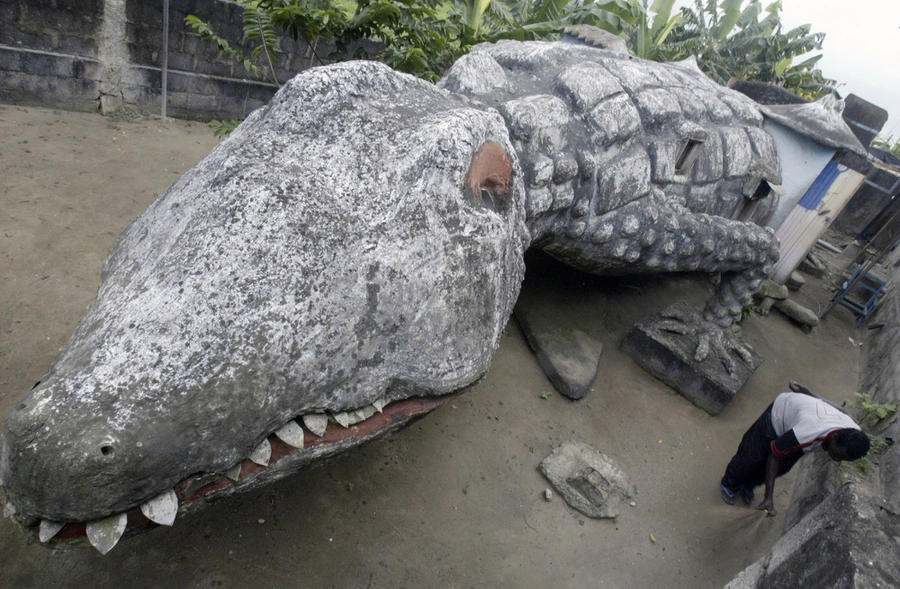
On September 11, 2008, Thierry Atta sweeps the courtyard of his crocodile-shaped home in Abidjan, the capital of the Ivory Coast. The artist Moussa Kalo, who had conceived and built the mansion but had passed away two months earlier, had Atta as his apprentice.
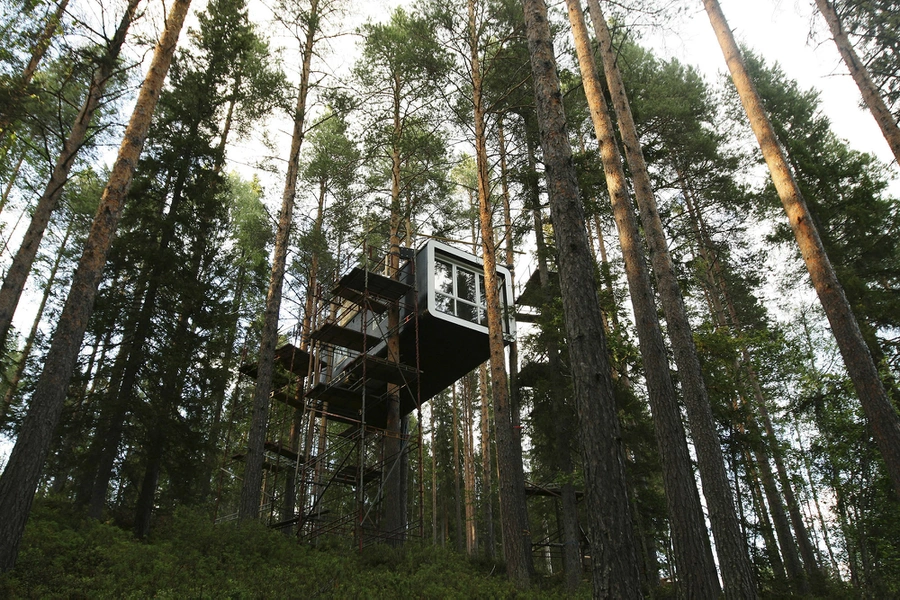
On July 5, 2010, The Cabin was being built on the site of Treehotel in the Swedish village of Harads. A grand new hotel concept that aspires to turn the basic treehouse into a top-notch vacation spot for design-conscious guests is about to debut in a little community in northern Sweden.
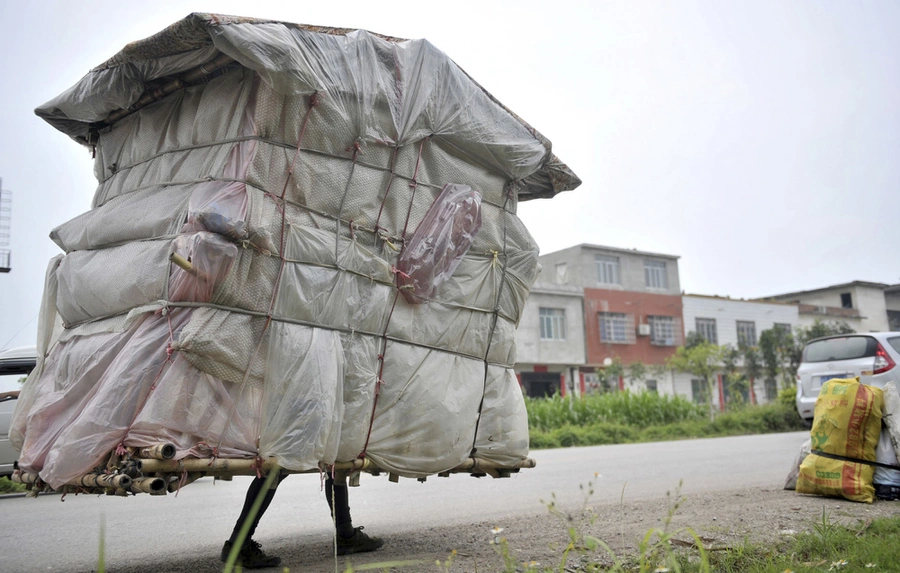
On May 21, 2013, Liu Lingchao, 38, walks alongside a road in Shapu Township of Liuzhou, Guangxi Zhuang Autonomous Region, China, while toting his temporary residence. Five years prior, Liu made the decision to walk from Shenzhen, where he had previously worked as a migrant worker, to his homeland of Rongan county, Guangxi. To carry with him while he walked an average of 20 miles per day, Liu constructed a 1.5 metre wide by 2 metre high “portable room” out of bamboo, plastic bags, and bed sheets. It weighed about 60 kg (132 lb). Throughout the voyage, Liu gathered trash to support himself.
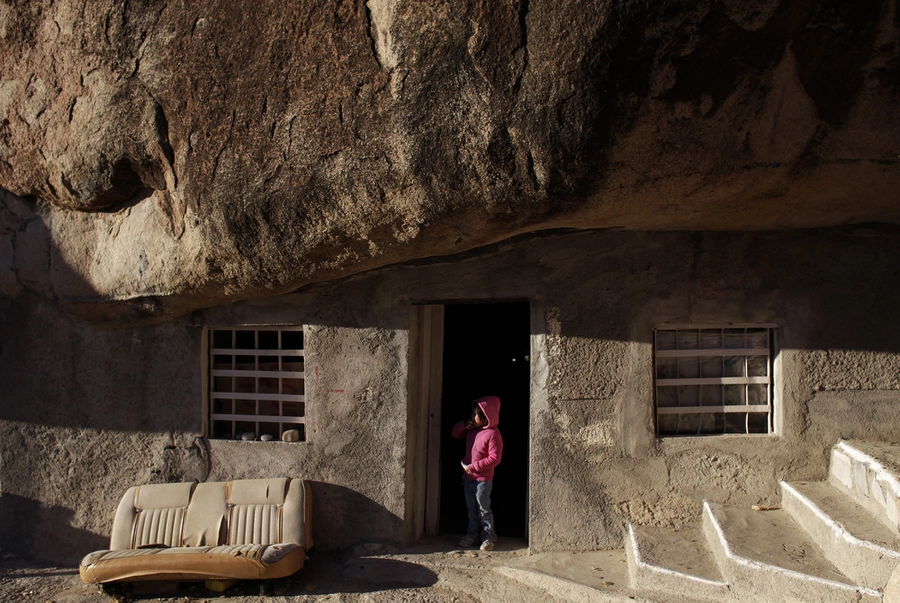
On January 17, 2013, Lucero Hernandez, the granddaughter of Benito Hernandez and Santa Martha de la Cruz Villarreal, stands at the entryway of her family’s house close to San Jose de Las Piedras in the northern Mexican state of Coahuila. The Hernandez family has resided in an eccentric, sun-dried brick house with a massive rock that measures 40 metres (131 feet) in circumference for more than 30 years. The house is discovered adjacent to San Jose de Piedras, a lonely settlement in the Coahuila desert about 80 kilometres (49 miles) from the Texas border.
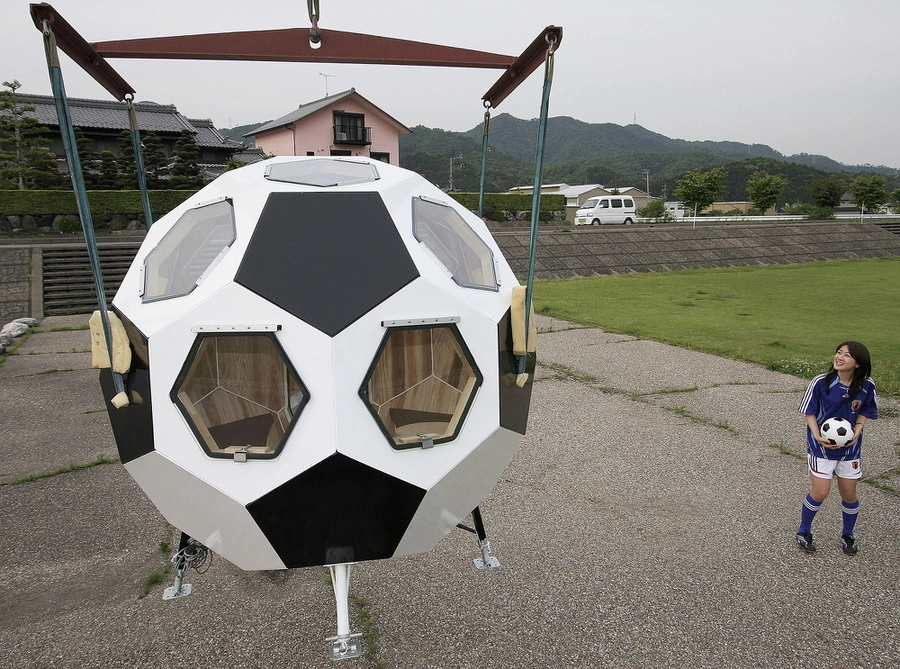
On May 25, 2006, in Gifu, Japan, a Japanese television host examines a disaster-resistant Japanese soccer-ball-shaped home built by Kimidori Housing. The 32-sided geodesic sphere cost less than $15,000 and has enough structural integrity to withstand earthquakes.

On January 5, 2008, a woman strolls past the “China House” in Tianjin. Ancient bowls, dishes, and vases, totaling hundreds of millions of pieces, are inlaid throughout the entire structure to embellish the home.
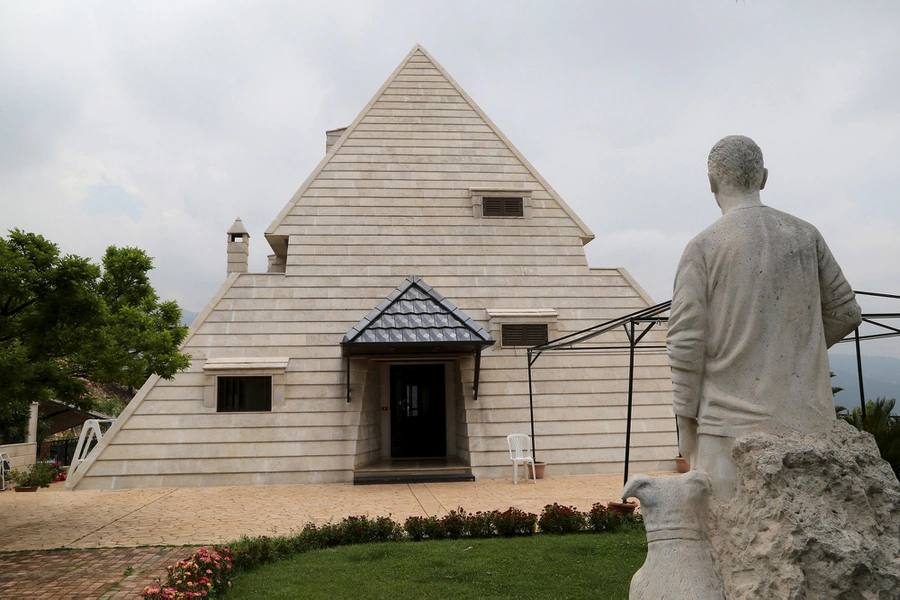
A statue stands in front of a pyramid house in the village of Miziara, northern Lebanon.
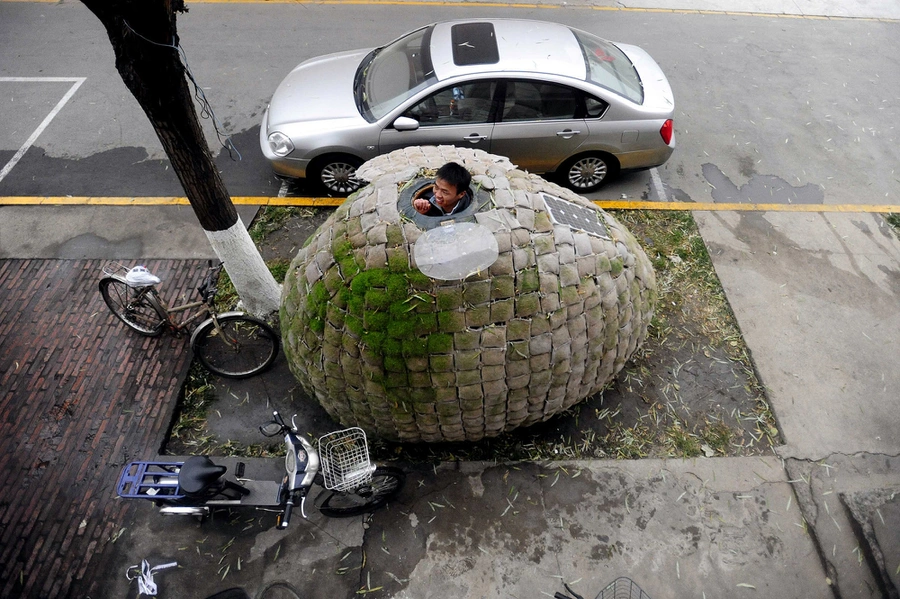
On December 1, 2010, 24-year-old Dai Haifei of the Hunan region of China peers out from his egg-shaped mobile home, where he has been residing for the last two months and is close to his workplace. The house, which cost approximately $1,000 to construct, is built of bamboo strips and a mattress, wrapped in a layer of heat- and water-resistant material, and covered in patches of bags filled with processed wood peels and grass seeds that could produce grass in the spring.
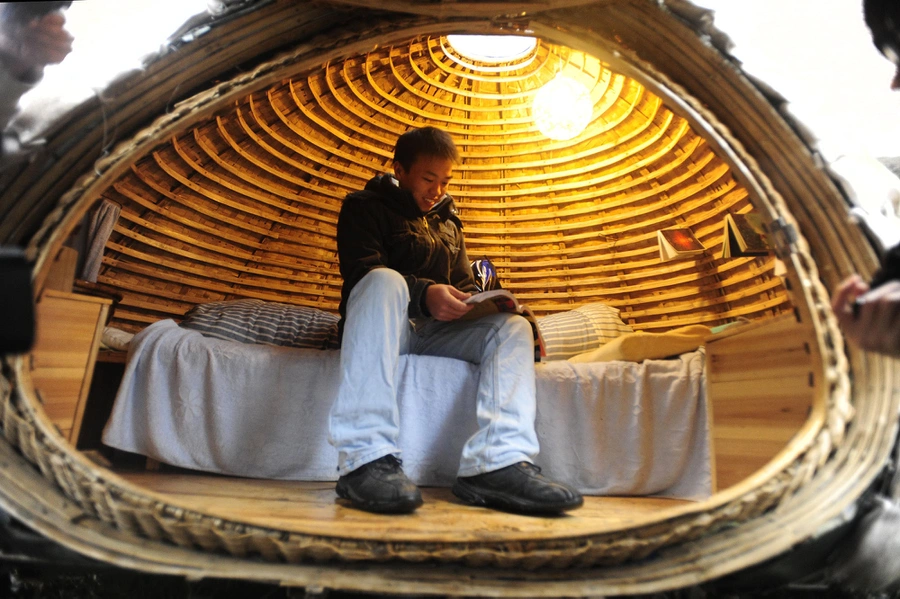
Dai Haifei, 24, from China’s Hunan province, rests in his egg-shaped mobile house near his office in Beijing on December 1, 2010.
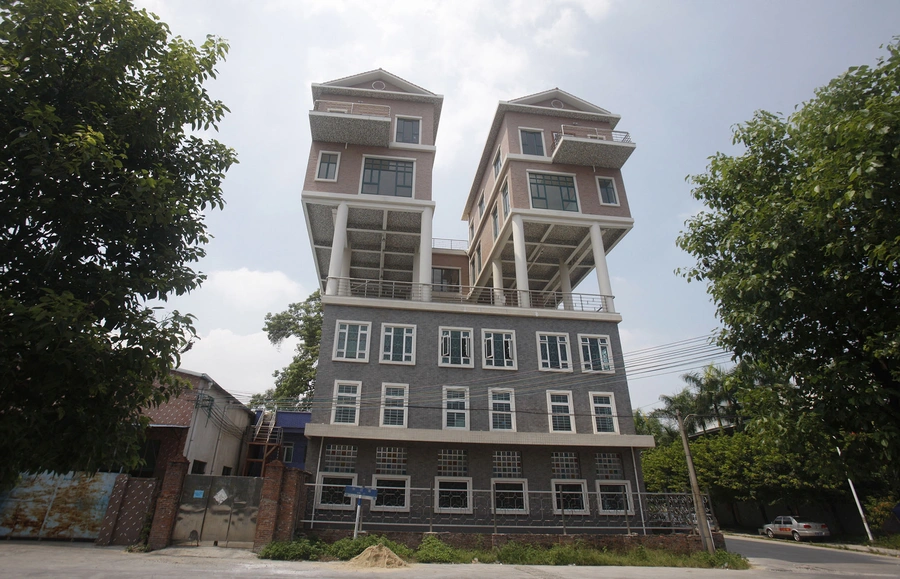
On September 10, 2013, homes can be seen on the rooftop of a factory building in Dongguan, Guangdong province. According to the local media, the government claimed that because the size of the houses differed from the original design that was submitted, the building should be regarded as unlawful.
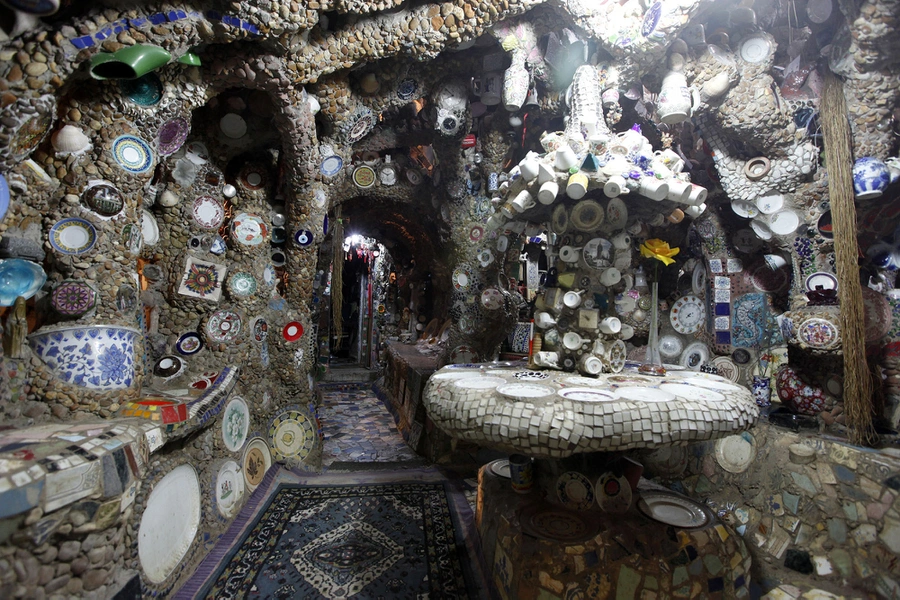
On October 2, 2012, Brazilian gardener Estevao Silva da Conceicao was inside his self-built Casa de Pedra, or House of Stone, in the Paraisopolis slum of Sao Paulo. Silva da Conceicao, who had never heard of Spanish Catalan architect Antoni Gaudi, created his home employing every type of object possible in a design that is strikingly similar to Gaudi’s.
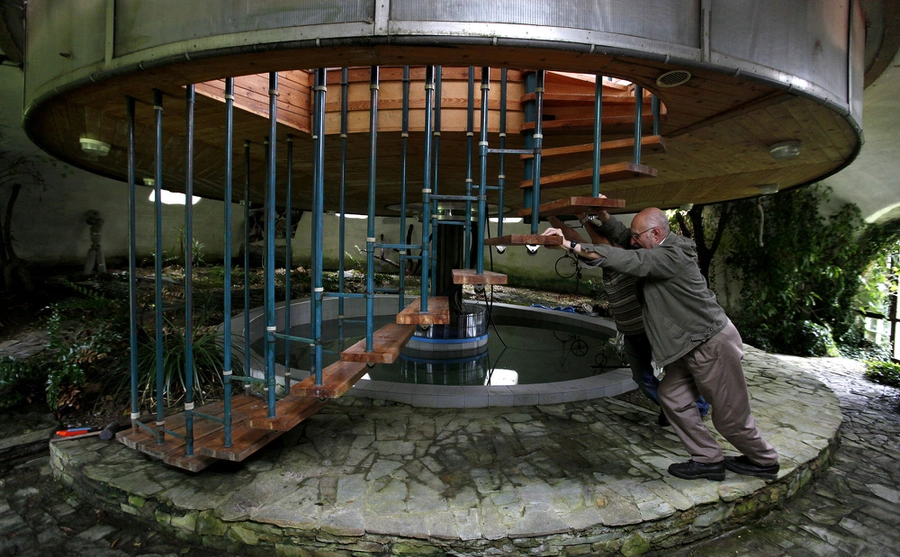
On August 7, 2012, 73-year-old builder Bohumil Lhota turns the house he constructed in Velke Hamry, close to the town of Jablonec nad Nisou, 100 kilometres (62 miles) northeast of Prague. In order to take advantage of the cooler ground temperatures, Lhota started construction on the unusual house in 1981.
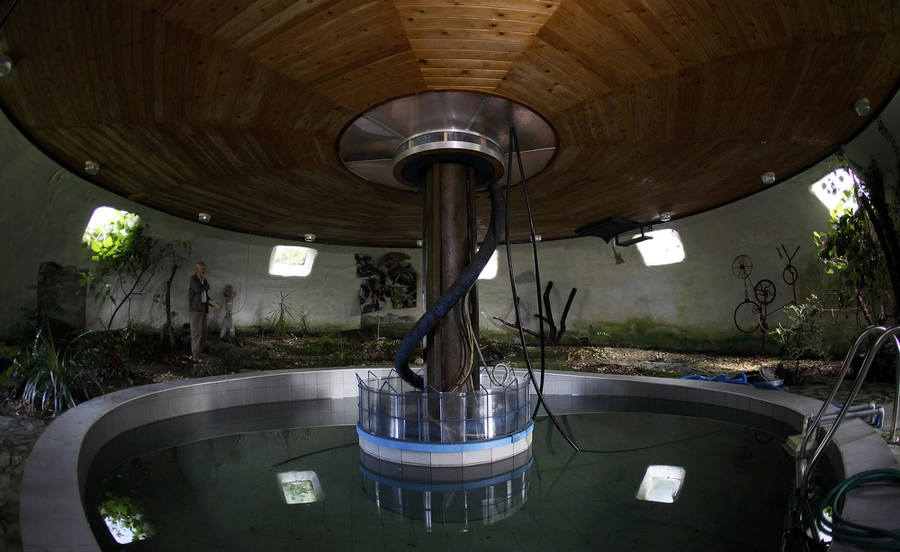
Bohumil Lhota, who built the home in Velke Hamry, Czech Republic, on August 7, 2012, uses a system to change the height of it. Lhota can choose his preferred window view because his 2002-built home can move up and down, spin on its sides, and tilt.
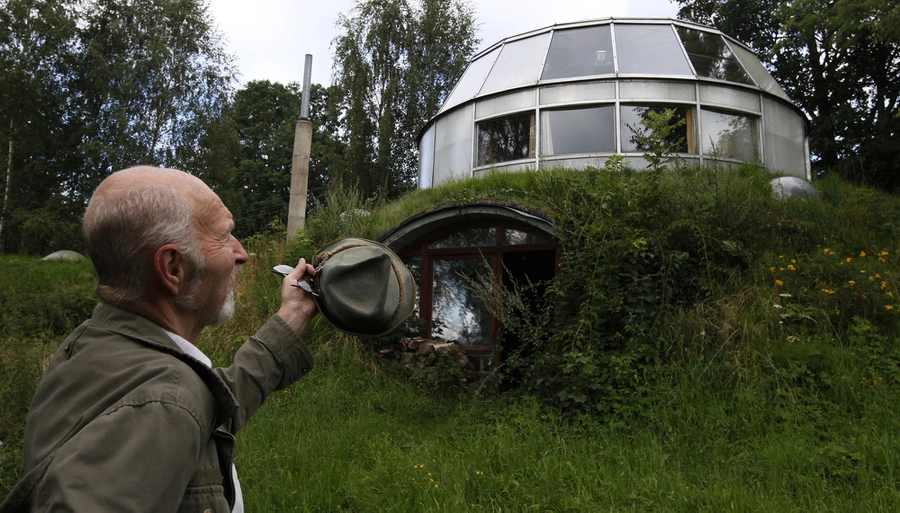
Bohumil Lhota stands in front of the house he built in Velke Hamry on August 7, 2012.
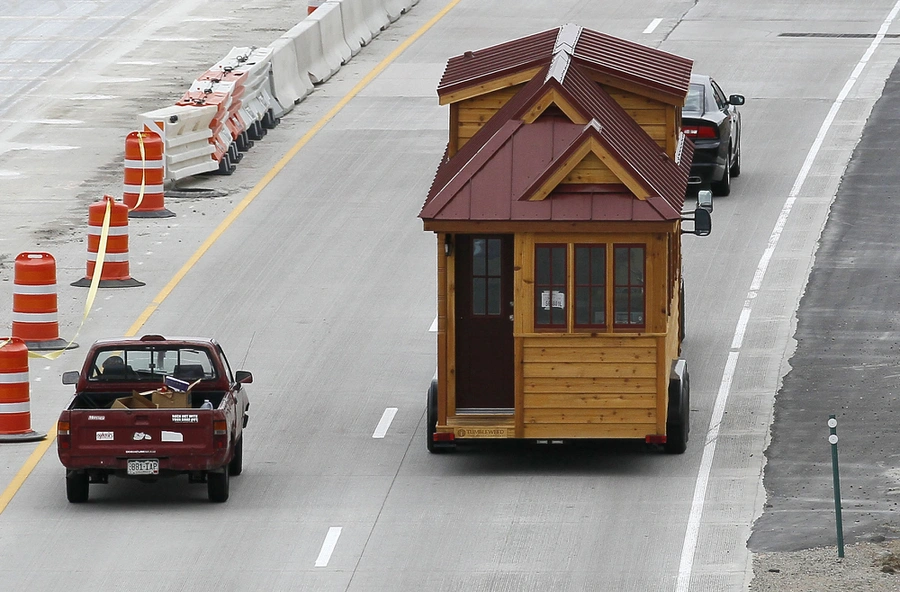
On August 4, 2014, a Tumbleweed brand Cypress 24 model Tiny House is towed down a highway close to Boulder, Colorado. The Tiny House Movement got its start a few years ago when people built incredibly compact homes and fell in love with their newly streamlined lives. These tiny homes can be as small as 100 square feet or as large as 1,000 square feet.
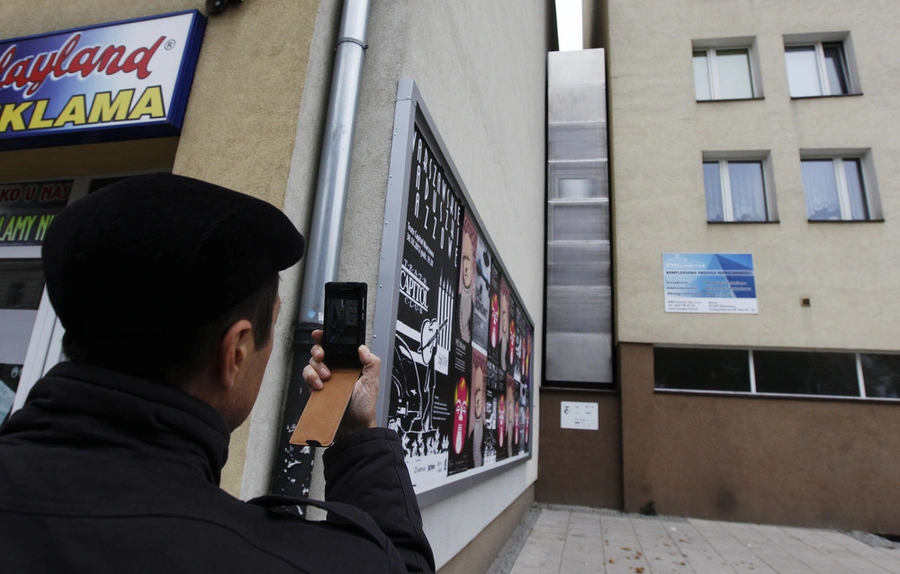
A man in Warsaw, Poland, snaps a photo of one of the planet’s tiniest structures, which was constructed as an artistic exhibit jammed between two other structures. The building’s thinnest point is only 92 cm (36 inches) wide.
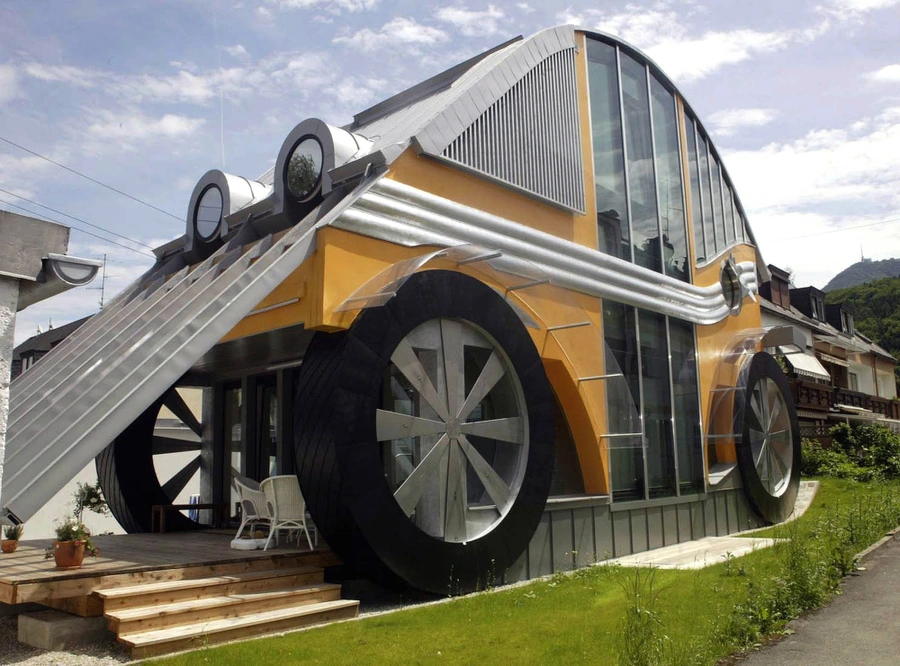
A car-shaped dwelling, built for a family of four, by architect Manfred Voglreiter, in the town of Langwied, in the Austrian Salzburg province.
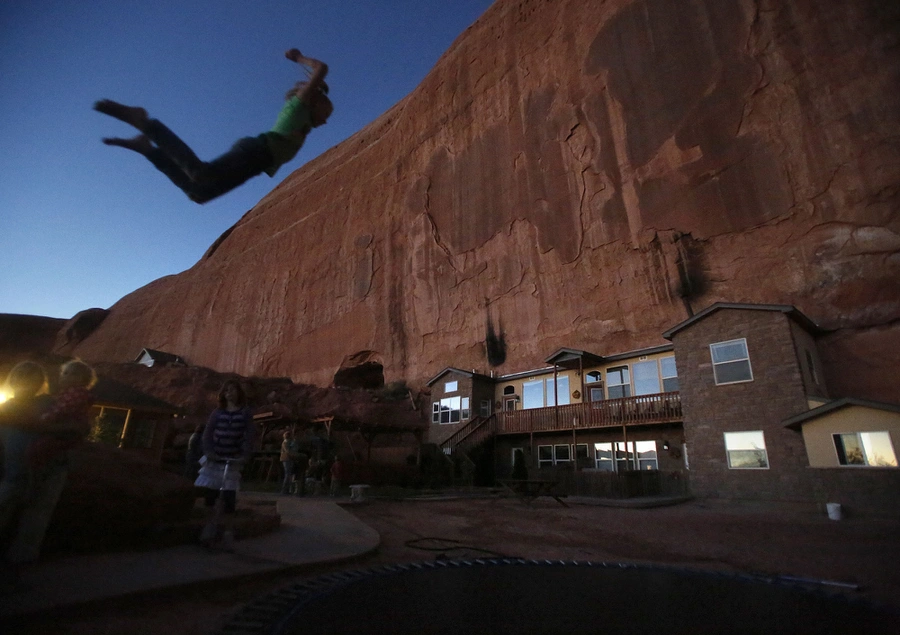
The “Rock,” as it is known by the roughly 100 residents who make up 15 Mormon families, was established atop a sandstone formation close to Canyonlands National Park about 35 years ago. The beliefs of The Church of Jesus Christ of Latter-day Saints included polygamy, which was introduced to Utah by devoted Mormons in the late 1840s. The widespread Mormon church stopped doing it in 1890, but an estimated 37,000 fundamentalist Mormons still do it because they think plural marriage will elevate them in paradise.
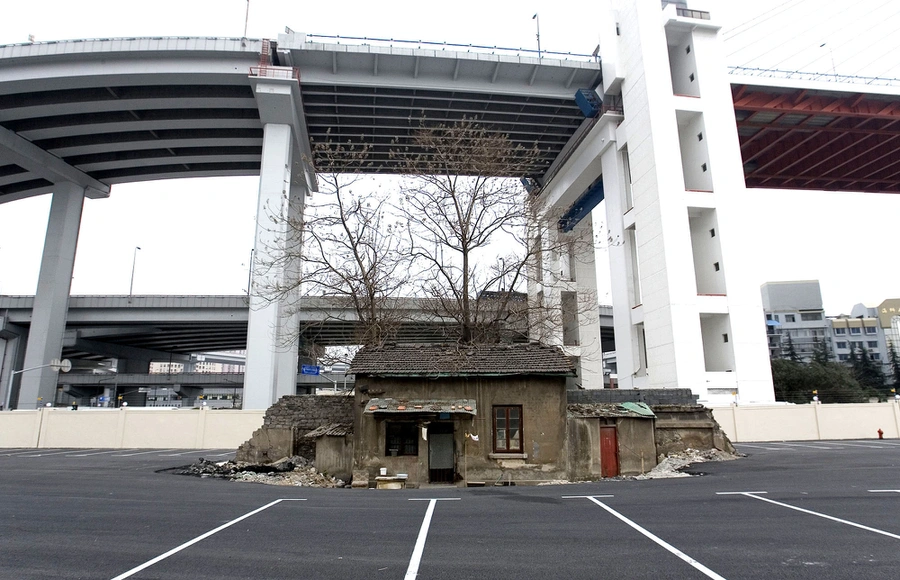
On April 6, 2010, beneath Nanpu Bridge in Shanghai, China, the final house in a historic neighbourhood stands by itself in a parking lot for the upcoming Shanghai World Expo 2010. Shi Yuji was the house’s obstinate owner. Days later, the home was destroyed, and the owner relocated to a dorm for workers.
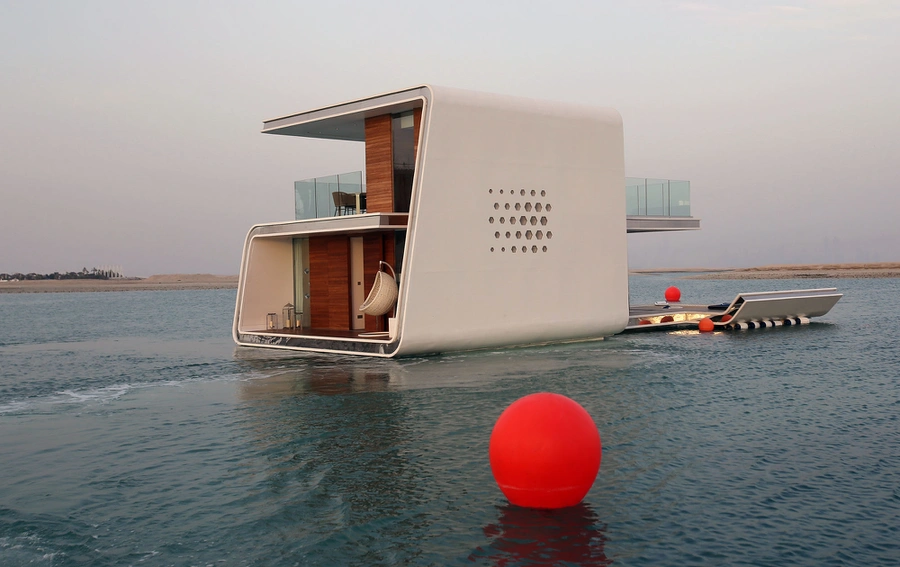
On May 9, 2016, a full-scale mock-up of the Floating Seahorse residence will be prepared for visitors to see on The Dubai World’s seas. The Seahorses are a part of the expansive and ambitious hotel construction known as The Heart of Europe, which aims to generate interest in the long-stalled Earth-shaped island project named The World off the coast of Dubai.
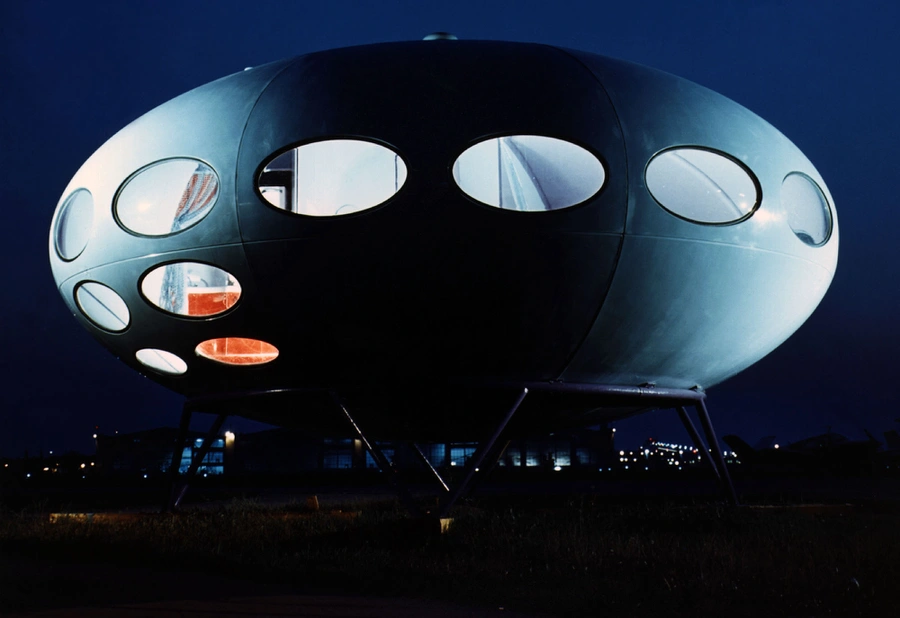
The Futuro II, which resembles a flying saucer, has been chosen as the main prize in a caption competition being held by the Arrow Company for college students nationwide. The Futuro II is a 26-foot-diameter, 12-foot-tall structure that is perched on the edge of an international airport. It can comfortably accommodate 2-4 people and is delivered as a complete home.
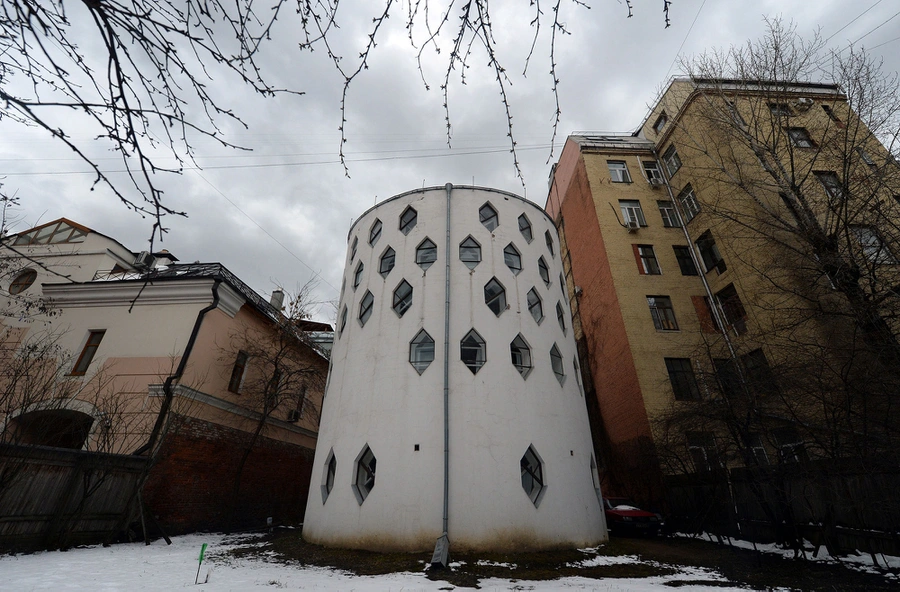
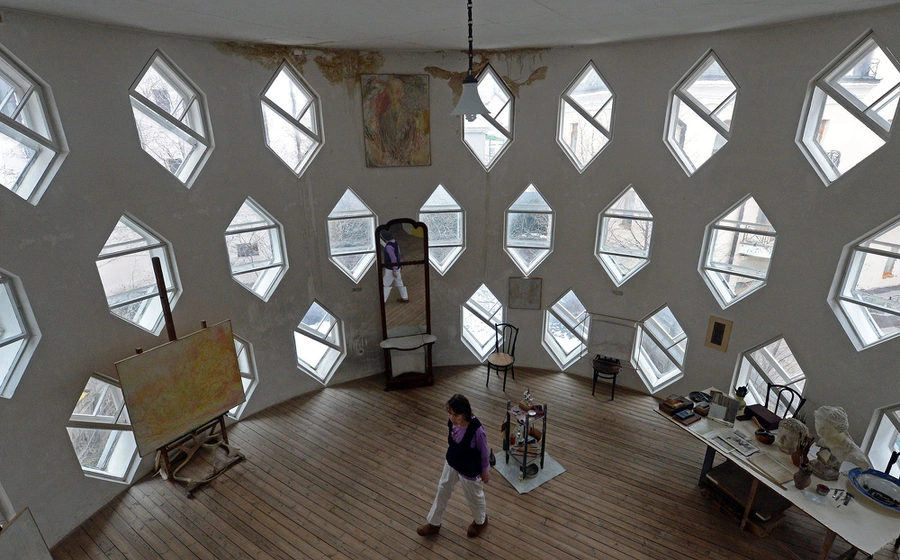
On April 3, 2014, Yekaterina Karinskaya, the granddaughter of architect Konstantin Melnikov, strolls through her grandfather’s Moscow mansion, also known as Melnikov’s house. The structure, which consists of two vertical cylinders punctuated by hexagonal windows, still has a revolutionary appearance, but it hasn’t been able to welcome visitors because of a protracted legal battle between the owners’ family and government officials.
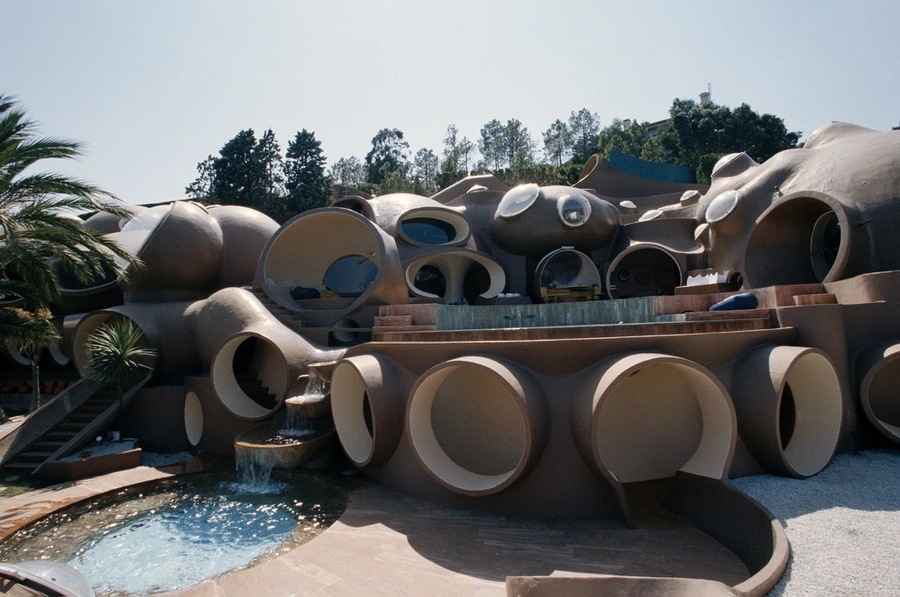
In Theoule-sur-Mer on the French Riviera, Le Palais Bulles, often known as The Bubble Palace, is perched on a hillside with a view of the Mediterranean. The architect Antti Lovag collaborated with Pierre Cardin to create the futuristic palace, which has spherical rooms and spinning levels.














